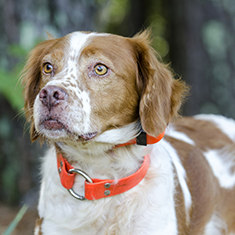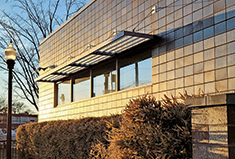Pet Safety In & Around the Home
By Mary Meldrum
MANY OF US ARE ANIMAL LOVERS, INCLUDING MYSELF. With so many potential threats in our homes these days, it’s important to know how to keep our pets safe, and to examine our home from the “noselevel” view.
Let’s start with foods that are dangerous. There are many, but here is a somewhat comprehensive list of the worst and also most common:
- Chocolate and cocoa
- Onions and onion powder
- Granulated garlic, garlic powder
- Grapes, raisins, and currants
- Coffee (grounds, coffee beans)
- Caffeine (black tea, yerba mate, soft drinks)
- Yeast dough
- Macadamia nuts
- Green potatoes and green tomatoes
- Avocado pits
- Seeds and pits of cherries, apples, apricots
- Xylitol – an artificial sweetener found in chewing gum, candy and breath fresheners, and toothpaste
What about air pollution? Recent reports suggest that indoor air may be even more polluted than the air outside.
 Many cleaning products are potentially toxic. Your companion’s nose is constantly close to the floor. Normal grooming behavior includes licking paws that may come in contact with those products’ residue. Natural alternatives are readily available, and simple homemade products with inexpensive ingredients like baking soda, vinegar, and borax clean as well as most commercial products. Consider replacing chemically-based air fresheners, detergents, fabric softeners, disinfectants, furniture polish, glass cleaners, insecticides, and scouring powders with natural alternatives.
Many cleaning products are potentially toxic. Your companion’s nose is constantly close to the floor. Normal grooming behavior includes licking paws that may come in contact with those products’ residue. Natural alternatives are readily available, and simple homemade products with inexpensive ingredients like baking soda, vinegar, and borax clean as well as most commercial products. Consider replacing chemically-based air fresheners, detergents, fabric softeners, disinfectants, furniture polish, glass cleaners, insecticides, and scouring powders with natural alternatives.
Plug-in air fresheners and potpourris are quite popular. However, some odors that humans find agreeable are actually annoying to cats. Citrus and pine are both highly irritating and even poisonous if overdone. Constant bombardment with these scents is unfair to your pet; not to mention the potentially toxic chemicals they contain. Choosing more natural cleaning products and air fresheners will go a long way in limiting the toxins your companion has to deal with on a daily basis.
Medications are another source of toxic poison for your pets. Pills dropped on the floor immediately transform into cat toys! Poison control centers get thousands of calls every year about pets that have consumed painkillers, cold medications, antidepressants, dietary supplements, and other items. Be sure to keep medications and vitamins safely stored. Be especially careful with pet vitamins and medications, since they are often flavored and smell enticing.
If your dog or cat accidentally ingests human medication or supplements, contact your veterinarian or poison control center right away. Many human medications, such as ibuprofen and acetaminophen, are highly toxic to animals, even in small doses.
PLANTS ARE ANOTHER POTENTIAL SOURCE OF POISON. While providing beauty and fresh air to our indoor spaces, pets may consider them toys or snacks. Learn which plants are potentially toxic and keep them out of reach. Some toxic houseplants include:
- Amaryllis
- Azalea
- Caladium (Elephant’s Ears)
- Chrysanthemum
- Creeping Charlie
- Dracaena
- Dieffenbachia
- Ivy (Araliaceae)
- Lily (Easter lilies, daylilies, Tiger lilies and Stargazer lilies)
- Mistletoe
- Philodendron
- Pothos
- Schefflera
- Yew tree
A good general rule is that all plants grown from a bulb are toxic. Keep pets away from bulbs and bulb plants.
Insecticides and rodenticides must be used very carefully and judiciously in and around a household with pets. Baits or traps must be located in areas totally inaccessible to your companion. Bug sprays and baits should be used with extreme caution, and the treated area should be completely off-limits to your pet for several days. Read product labels carefully for toxicity information. Cats, and some dogs (especially terriers), love to hunt and eat bugs and rodents, so be sure they cannot come into contact with bugs or mice that have been poisoned.
MOTHBALLS ARE VERY TOXIC TO DOGS AND CATS (AND PEOPLE FOR THAT MATTER). Cats love to jump in open drawers or storage boxes, so use cedar paper or other moth deterrents instead.
Flea control products – even those designed to use on and around animals – can be toxic to our companions over time. There are natural alternatives that work as well or better than conventional chemical pesticide-based products.
 Hazards in your garage are also common. Many of us store a variety of chemicals and yard products in the garage. One of the most dangerous of these is anti-freeze. Antifreeze tastes sweet and is attractive to pets, but is highly toxic even in small amounts. If you keep yard and garden products in the garage, be sure they are up high on the shelves, in closed cabinets or in plastic bins with lids. Bins are also good for keeping fumes from fertilizers and other products contained. Paints, paint thinners, glues, and solvents stored in the garage should be kept away from pets as well. Don’t allow pets into areas where you are working. Clean up any spills immediately to ensure a dog or cat does not step in paint or solvent — many solvents will chemically burn the skin and paws, and paints will surely be licked off and ingested.
Hazards in your garage are also common. Many of us store a variety of chemicals and yard products in the garage. One of the most dangerous of these is anti-freeze. Antifreeze tastes sweet and is attractive to pets, but is highly toxic even in small amounts. If you keep yard and garden products in the garage, be sure they are up high on the shelves, in closed cabinets or in plastic bins with lids. Bins are also good for keeping fumes from fertilizers and other products contained. Paints, paint thinners, glues, and solvents stored in the garage should be kept away from pets as well. Don’t allow pets into areas where you are working. Clean up any spills immediately to ensure a dog or cat does not step in paint or solvent — many solvents will chemically burn the skin and paws, and paints will surely be licked off and ingested.
LOCAL PET RESCUES ARE AN OBVIOUS SOURCE FOR FURTHER INFORMATION about pet safety in the home. Sheri Snover of Berkley operates Second Chances Animal Resources, which works with other shelters and animal rescue organizations to help with the care and adoption of their animals.
One of their most popular projects is their harness exchange. Snover says, “Unfortunately, from time to time, we still see and hear people talk about using a choke, prong or shock collar. Some just need education on more humane methods to train and walk their dogs.” Second Chance provides to veterinary clinics and other organizations free Freedom-No Pull harnesses in exchange for their choke, prong, and/or shock collar, along with the education on their use.



